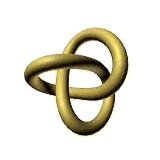Knot Theory
The Website for Learning More About Knots!
Hello
Animi, id est laborum et dolorum fuga. Nemo enim ipsam voluptatem quia voluptas sit aspernatur aut odit aut fugit. Nisi ut aliquid ex ea commodi consequatur? Quis autem vel eum iure reprehenderit qui in ea voluptate velit esse quam.
Excepteur sint occaecat cupidatat non proident, sunt in culpa.
Facere possimus, omnis voluptas assumenda est, omnis dolor repellendus. Ut enim ad minima veniam, quis nostrum exercitationem ullam corporis suscipit laboriosam.
 This site is designed for mathematics students at the high school and college levels as an introduction to an area of mathematics seldom explored in the typical math classroom – the Theory of Knots.
This site is designed for mathematics students at the high school and college levels as an introduction to an area of mathematics seldom explored in the typical math classroom – the Theory of Knots.
One thing that makes Knot Theory so interesting for mathematicians today is the fact that it’s such a “new” topic – Knot Theory is a relatively young field with many opportunities for discovery and exploration by mathematicians young and old. From this website you can learn:
A Brief History of Knot Theory
From the mathematical surge of interest in knots a little over a century ago to the recent and exciting application of Knot Theory to DNA and synthetic chemistry, you can get an overview of why knots are such a fascination for scientists and mathematicians alike.
Introduction to Knots
Learn what’s different about a “mathematical” knot and how we work with, transform, and classify knots. Also, find out what is the central problem of Knot Theory and what properties knots have. This page also has a brief introduction to links, another important topic in the theory of knots.
Advanced Knot Theory Topics
Once you understand the concepts in the introduction to knots, this page expands your knowledge with connected sums, composite and prime knots, stick knots, wild knots, and even has a section on coloring knots and links and why coloring is such an important topic to mathematicians.
DNA and Knot Theory Today
The recent interest in knots has been fueled by discoveries that involve knotting in the DNA strand, the genetic code that resides in all living things. Geneticists have discovered enzymes that actually “unknot” the DNA strand so that it can replicate. What interest scientists the most are the changes that occur in the structure of the DNA strand as a result of these knottings and unknottings.
Activities to Get Your Hands on Knot Theory
From an interactive game involving simplifying knots visually to 3D virtual reality knots to classroom-tested lesson plans, this page offers you a wide variety of ways to visualize and manipulate knots to extend your understanding of the topic.
“Knotty” Fun for All
Fun facts, game-like activities, jokes, links to other great knot sites, and a small picture gallery of Mr. Payne’s knot photographs can be explored on this enjoyable and informative entertainment page while you are learning about Knot Theory in other areas of the site.
If you have ideas, questions, or comments about the Knot Theory Online site and would like to share them, please feel free to e-mail Mr. Payne or Dr. Nardo. We are especially interested in hearing from teachers who have used knots in the classroom and students who have been motivated to study knots either in the classroom or on their own.
This site was developed by Bryson R. Payne, M.Ed. student at North Georgia College and State University in fulfillment of Math 7090 with the assistance of supervising professor Dr. John Nardo. The opinions expressed in these pages are those of the author, not the university. Please direct all inquiries to Mr. Payne at mrpayne@freelearning.com or visit his personal web site at www.freelearning.com . Thank you!